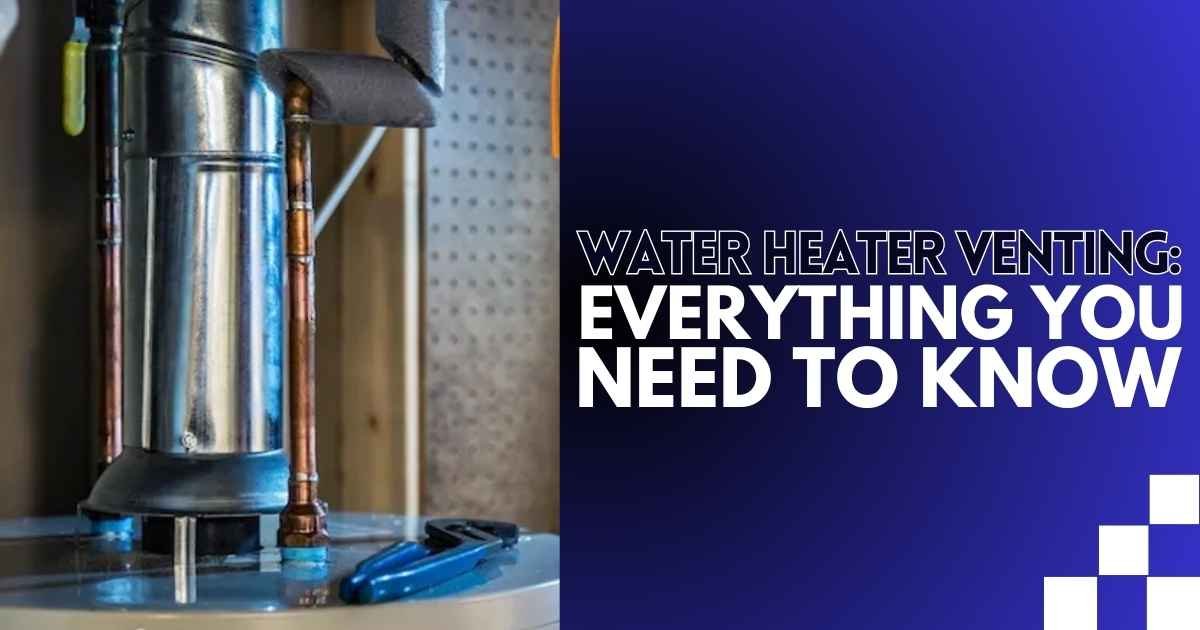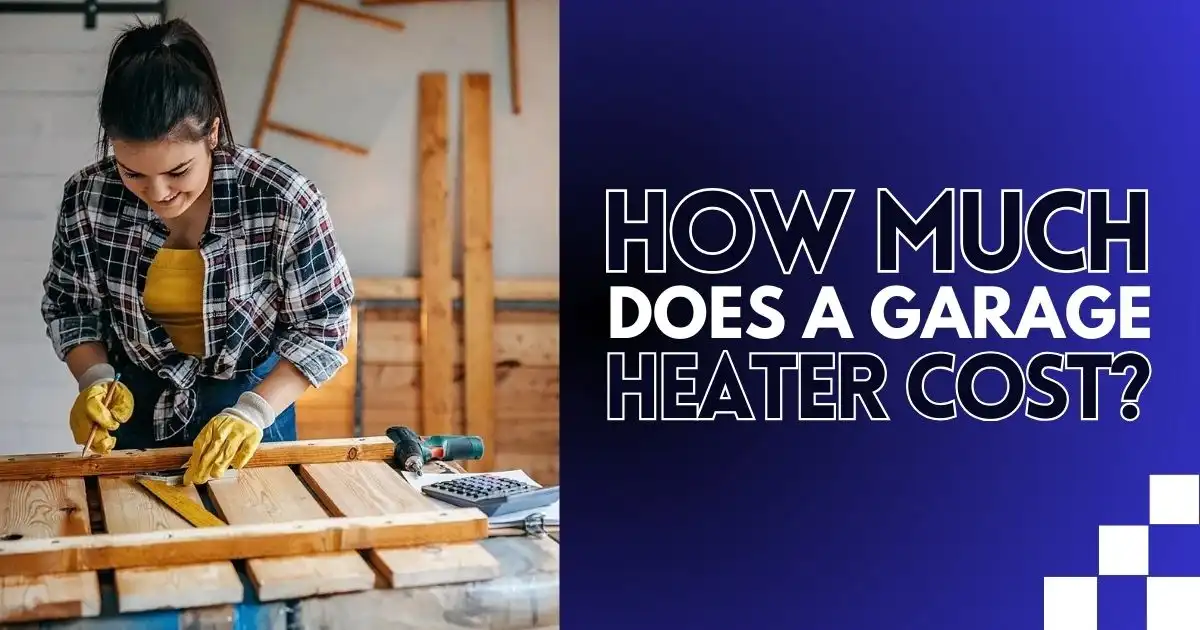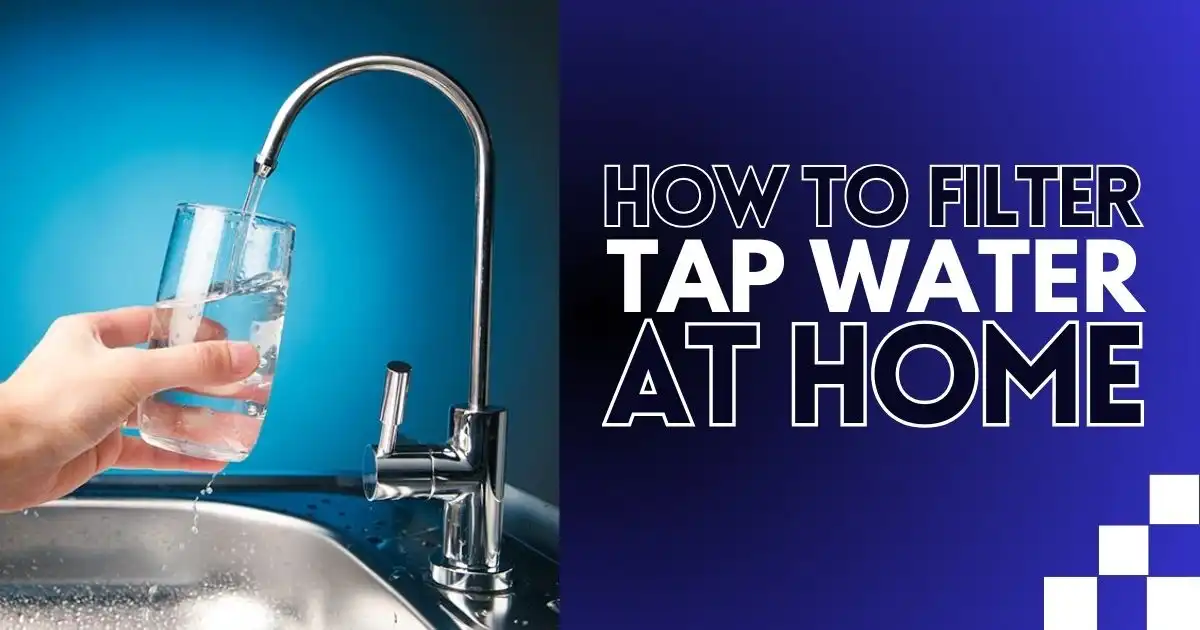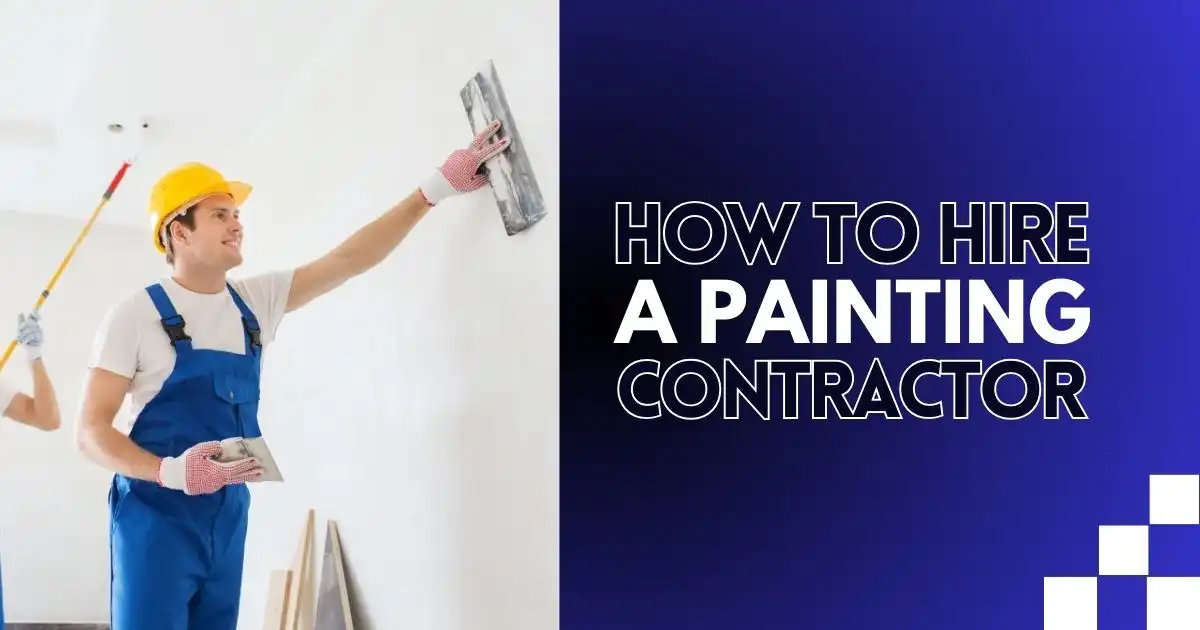Many homeowners think water heater venting is something they can handle on their own. After all, it’s just part of installing a water heater, right? But the truth is, venting is more complicated and can cause big problems if done wrong.
From safety concerns to understanding the costs, knowing what goes into proper water heater venting helps you make smarter choices. If you’re planning to tackle it yourself or hire a professional, getting it right is the only way to avoid headaches later.
What is Water Heater Venting?
Gas and propane create harmful gases like carbon monoxide. Without a venting system for your water heater, these gases could build up in your home and become dangerous, a problem known as backdrafting. A water heater venting system uses a vent pipe or duct to send these gases outside. This process can happen naturally or with the help of fans to keep your home safe.
Proper venting not only protects your home but also helps your water heater run efficiently. This means you can enjoy hot showers and save on electricity bills. Make sure your water heater venting system is working properly to avoid problems.
Why Proper Water Heater Venting Matters?
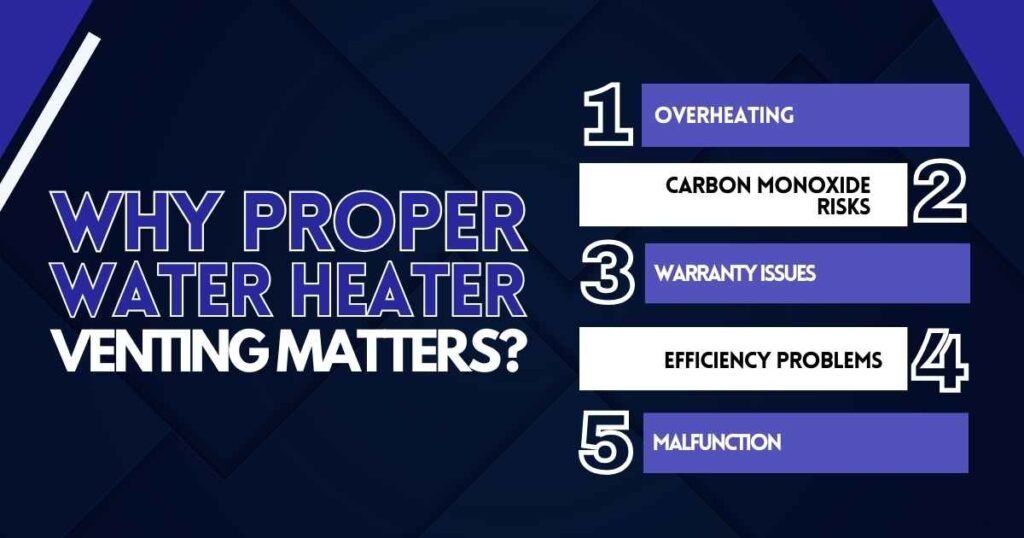
A water heater with poor venting can cause serious problems for your home and your wallet. Venting a water heater correctly is not just about following installation rules—it’s about keeping your household safe and avoiding costly repairs. Here are some reasons why proper water heater venting is so important:
- Overheating: Poor venting can trap heat inside the water heater, causing it to overheat. This not only damages the heater but may also pose a fire risk. Once the unit is overheated, repairs might not be enough, and you could end up needing a complete replacement.
- Carbon Monoxide Risks: Improper venting can cause carbon monoxide to leak into your home. This odorless gas is extremely dangerous and can lead to serious health problems or even death. A properly vented water heater ensures harmful gases are safely directed outside.
- Warranty Issues: Most water heater warranties require proper installation, including venting. If your water heater fails and the venting wasn’t done correctly, the warranty may be voided, leaving you to cover the full cost of repairs or replacement.
- Efficiency Problems: Without proper venting, your water heater might struggle to operate efficiently. Poor airflow can make the system work harder, increasing energy bills and reducing the lifespan of the unit.
- Malfunction: Water heaters need oxygen for combustion. If the venting doesn’t allow enough airflow, the heater can malfunction, leaving you without hot water when you need it most.
Proper venting is essential for maintaining safety in your home, ensuring your water heater runs efficiently, and protecting your investment.
Types of Water Heater Venting
Water heater vent types include three main methods for venting gases: atmospheric venting, power venting, and direct venting. Each option has pros and cons, and the choice depends on factors like:
- Location: Where the water heater will be installed in your home.
- Water Heater Type: The kind of water heater you’re using.
- Building Rules: Local building codes that need to be followed.
- Budget: How much you’re ready to spend on installation.
- BTU Rating: The energy efficiency of the water heater.
Selecting the right venting type can be tricky. It’s wise to work with a licensed professional to ensure your home’s safety and meet local regulations.
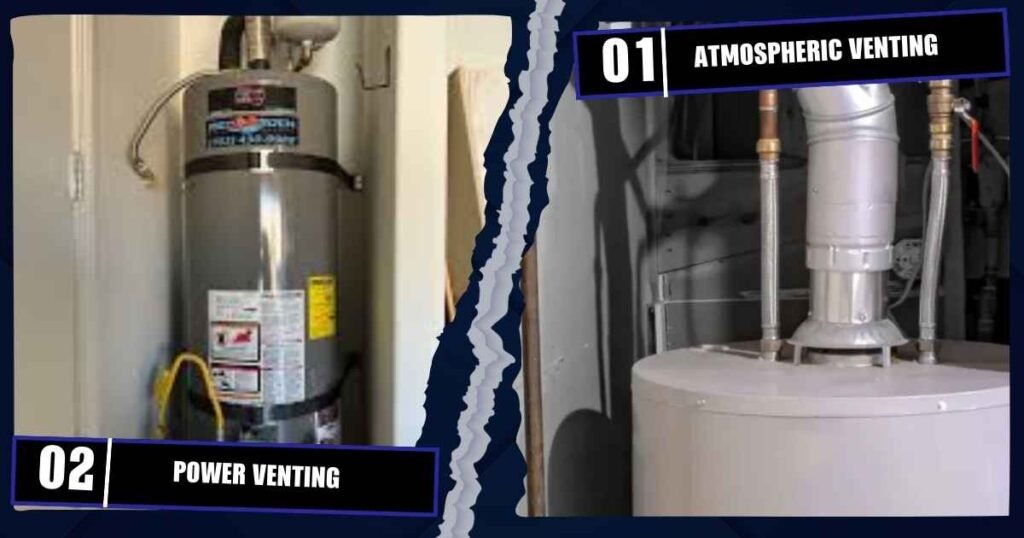
1. Atmospheric Venting (Chimney Venting)
Atmospheric venting works naturally because hot air rises. Combustion gases from the venting water heater move up through a flue or chimney pipe and are vented outside without the help of fans or blowers.
This method is simple and affordable, making it a popular choice for most homes. However, it comes with risks. Changes in air pressure, such as during windy weather, can disrupt the flow and cause gases to spill back into the home. Atmospheric venting is best suited for homes in areas with stable weather conditions.
2. Power Venting
Power venting uses a fan or blower to actively push combustion gases out of the water heater. This method is especially useful when natural venting isn’t an option, such as in basements or other confined spaces. It works well for high-efficiency water heaters, which often don’t produce enough hot exhaust gas for natural venting.
Power venting also offers flexibility, allowing installation through walls or ceilings. However, it requires a nearby power outlet for the fan or blower and may increase installation costs. This venting method is ideal for homes with limited venting options or unique installation needs.
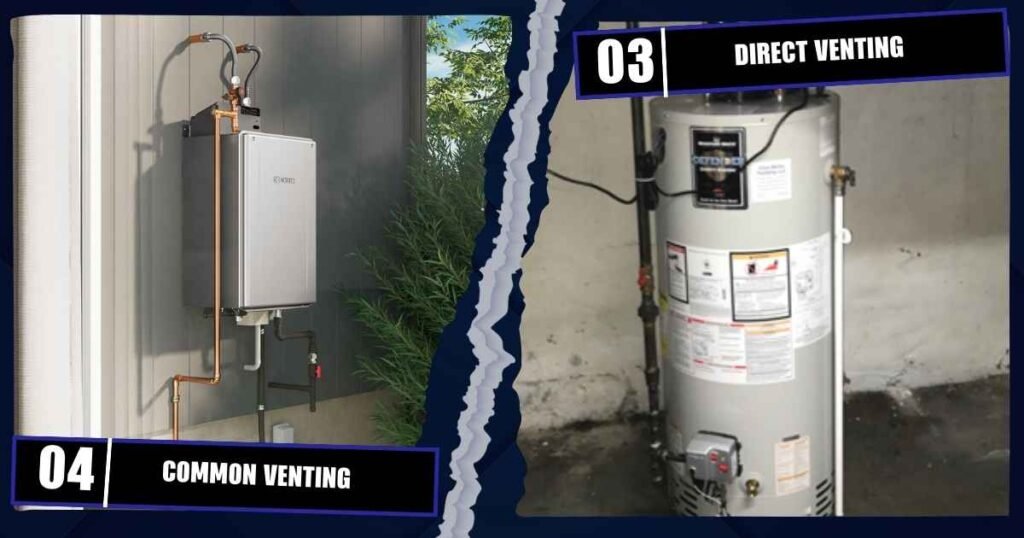
3. Direct Venting
Direct venting utilizes two pipes: one to bring in fresh air for combustion and another to vent the gases outside. This creates a sealed system that prevents combustion gases from leaking into the home. It’s a safe and efficient method that uses natural convection within a closed system.
However, direct venting is more complex and expensive to install. It is often required by building codes in areas like townhomes or apartments, where vertical venting isn’t feasible. This method is best for homes without access to vertical vents, such as townhouses or buildings with shared walls.
4. Common Venting
Common venting is an older system that handles exhaust gases from multiple appliances, such as a water heater and a furnace. However, this setup carries risks, and many areas now restrict its use due to safety concerns.
If your home currently uses a common vent, you may need to upgrade to meet updated building codes. This often involves replacing the system entirely rather than repairing it.
Smart Choices Matter
Even the handiest homeowner needs a little help sometimes. Think about it—professional athletes still rely on coaches to perform at their best. When it comes to water heater venting, the stakes are even higher. A small mistake could lead to big problems, from safety risks to costly repairs. Trusting an expert means the job gets done right, giving you peace of mind and saving you from trouble later.
Need help with water heater venting? Trust Vegas Plumbing Pros for safe, reliable installation. Our licensed experts ensure proper venting to keep your home safe and your water heater running efficiently. Avoid costly mistakes and protect your investment—call us today to schedule your service!
FAQs
What are the rules for water heater venting?
Water heater vent connectors should have an upward slope of at least ¼ inch per foot toward the vent or chimney. Gas piping leading to the water heater must be made of black iron pipe. Corrugated stainless steel tubing (CSST) or flexible gas lines are not permitted for gas drops to the water heater.
How to vent a tankless water heater?
To vent a tankless water heater, start by checking the manufacturer’s instructions for the specific venting system it requires. Most tankless water heaters use direct venting, which involves running a vent pipe through an exterior wall or roof. Use the correct materials, like stainless steel or PVC pipes, depending on your unit’s requirements.
What happens if a water heater is not vented properly?
Backdrafting is a serious risk that happens when gas-fired appliances, like water heaters, lack proper ventilation in their water heater vents. This can lead to a dangerous buildup of gases, including carbon monoxide—a colorless, odorless gas that can be deadly at high levels.
How do I know if my plumbing is properly vented?
Indicators of a clogged vent include slow-draining fixtures, gurgling noises in the pipes, or unpleasant sewer odors near sinks and drains. These issues can sometimes be linked to problems with venting a hot water heater, as proper ventilation is essential for maintaining an efficient plumbing system. While clogs often occur in the roof vent, they can also happen further down the plumbing line.
